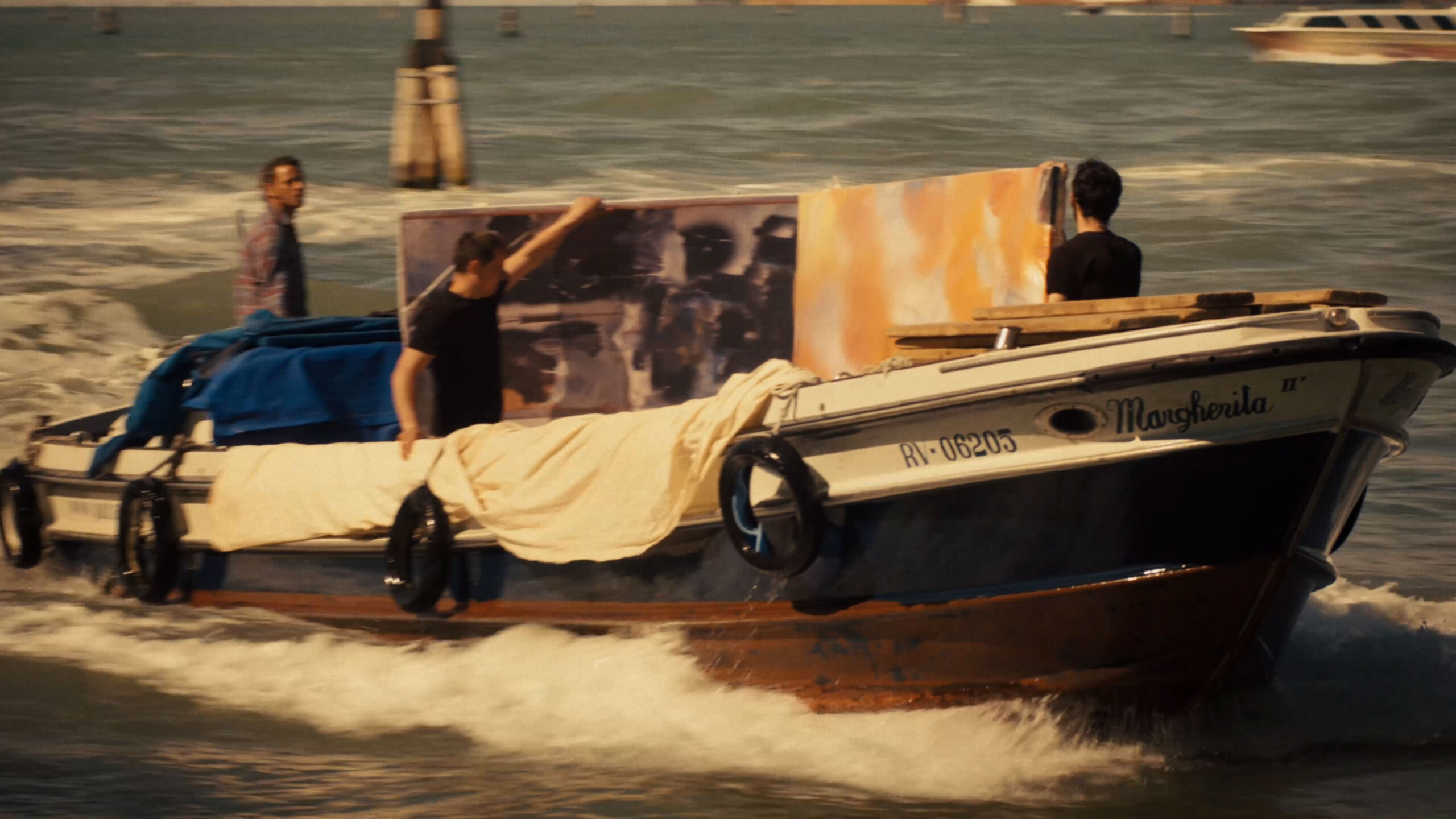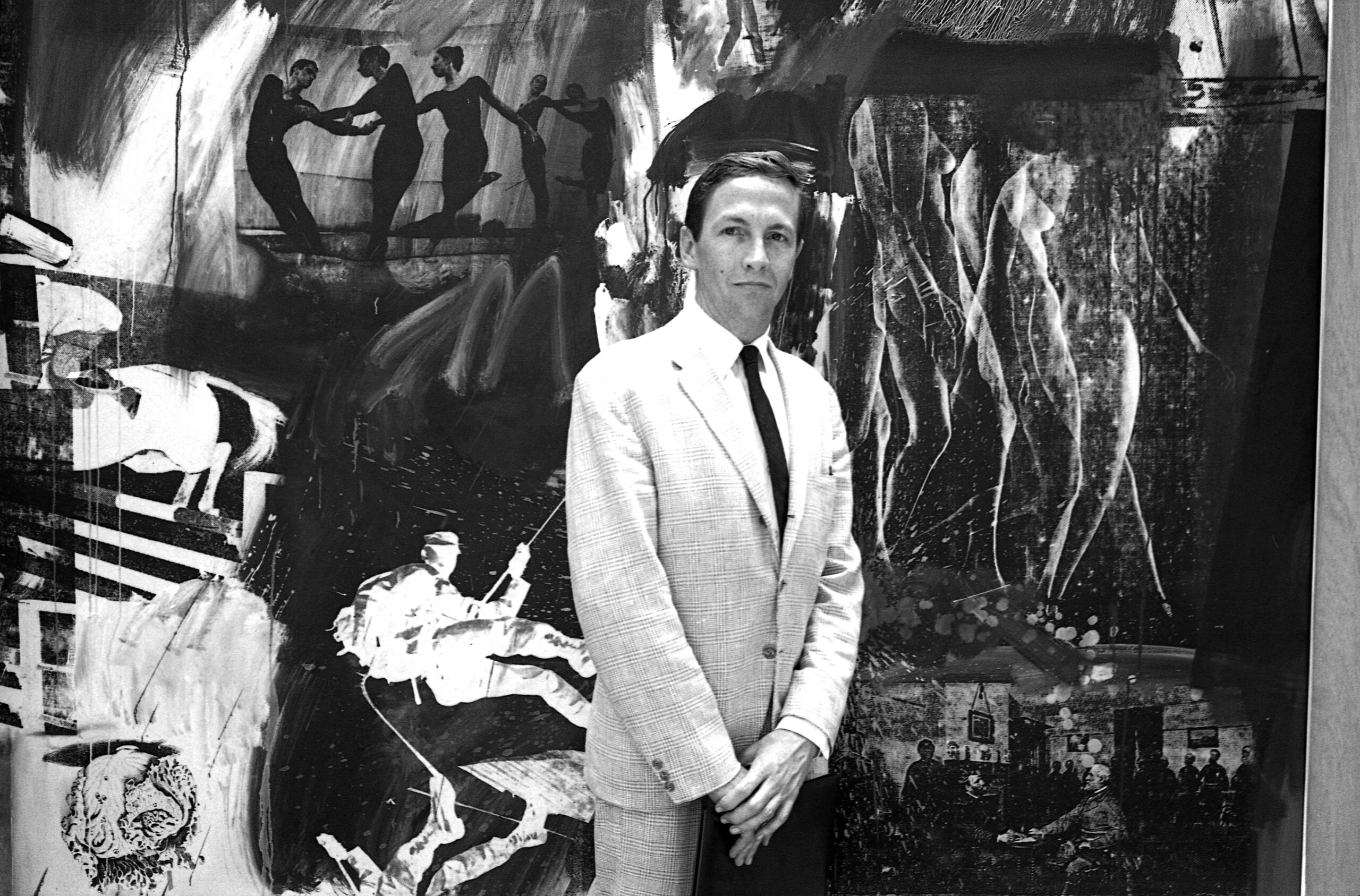
Amei Wallach is an award-winning art critic who, as a filmmaker, has often brought to the silver screen art history with acclaimed movies such as Louise Bourgeois: The Spider, The Mistress and The Tangerine and Ilya and Emilia Kabakov: Enter Here. Her latest cinematic oeuvre focuses on a peculiar story revolving around the oldest, largest and most important of the world’s international contemporary art exhibitions: The Venice Biennial.
Taking Venice uncovers the story behind the rumours of the American strategies to have the country’s chosen artist, Robert Rauschenberg, win the Grand Prize of the prestigious art fair in 1964. While the creator of ‘Combines’ was busy assembling street rubbish and mass market images to reflect on society, in Washington the State Department chose him as its unwitting secret weapon. The mission was to change the way American art was perceived worldwide, by winning at the Venice Biennale. As one interviewee clarifies: “America had to show it was not just a country of cars and bubblegum.” Hence the U.S. government and a team of high-placed insiders created a united front to help the talented Rauschenberg achieve the championship. The people involved in this enterprise included Alice Denney, a Washington insider and friend of the Kennedys; Alan Solomon, an ambitious curator making waves with trailblazing art; and Leo Castelli, a powerful New York art dealer.

Taking Venice is exceptionally engaging, as the film blends old footage with an investigative storytelling. The historical context is determining in this subtle political battle, since everything is happening during the Cold War, with the US in constant competition with the Soviet Union. It further unveils how this was a moment that allowed artists to build something new. The film also shines a light on the profound relationship between Robert Rauschenberg and Jasper Johns. The two artists encouraged and inspired one another.
Above all, the documentary allows a sneak peak into the way the business in the art world operates. We get a glimpse of it through the endeavours of Leo Castelli and his wife Ileana Sonnabend. The art market, fairs and competitions turn out to be very far from an earnest celebration of the creative art. Those who are makers of imaginative realms come across as pawns, within plots that they are utterly unaware of.

Wallach’s documentary premiered at DOC NYC. Currently Zeitgeist Films, in association with Kino Lorber, have acquired North American rights for distribution. The film’s release arrives at an emblematic moment, since the 2024 Biennale will mark the sixtieth anniversary of the historic year that Rauschenberg became the first American to win the Biennale’s Grand Prize, the International Prize in Painting.
The film displays Rauschenberg’s joyous and unconstrained energy bloom. Also his theatrical contribution emerges and is glorified through his mesmerising stage designs, through the collaboration with legendary Merce Cunningham and John Cage, that he met at the Black Mountain College. Back in 1964 Rauschenberg wasn’t a a political artist, but throughout his profession, we witness how in his later years he channelled his art towards a progressive global responsibility. In fact, the criticism of society engrained in artworks has the power to make us all aware of issues that influence our society. At the end of Taking Venice Rauschenberg questions the politics of nationalism that sent him to the Biennale in the first place. His style transformed into a philosophical approach: the materials he combined assembled more than simple materials, they connected art history with social days of yore.
Final Grade: B+
Check out more of Chiara’s articles.
Cover Photo: Photo Ugo Mulas © Ugo Mulas Heirs. All rights reserved.

